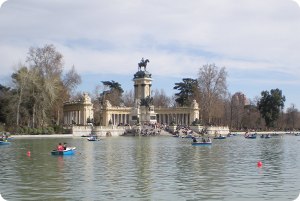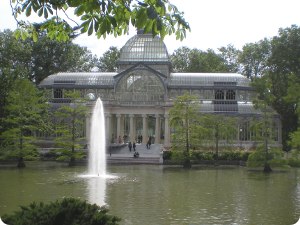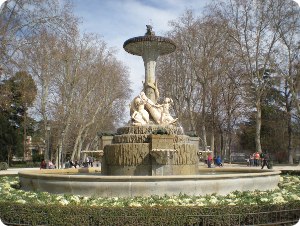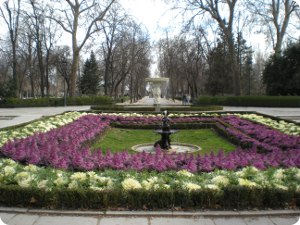Buen Retiro Park
Buen Retiro Park
 The Buen Retiro Park ("Park of the Pleasant Retreat", in english) is the first biggest park of Madrid city.
It has 1.4 km2 (350 acres) at the edge of the city center. The park belonged to the Spanish Monarchy until the
late 19th century, when it became a public park.
It's a magnificent park, filled with beautiful sculpture and monuments, galleries, a peaceful lake and host to a variety of events.
The Buen Retiro Park ("Park of the Pleasant Retreat", in english) is the first biggest park of Madrid city.
It has 1.4 km2 (350 acres) at the edge of the city center. The park belonged to the Spanish Monarchy until the
late 19th century, when it became a public park.
It's a magnificent park, filled with beautiful sculpture and monuments, galleries, a peaceful lake and host to a variety of events.
History of the park:
The park was born in 1630-1640, when Gaspar de Guzmán, Count-Duke of Olivares, gave the king Philip IV several tracts of land in the vicinity for the Court's recreational use.
Philip V (1700–1746) ordered the creation of a parterre, the only French-style garden in the complex.
During the reign of Ferdinand VI, Buen Retiro was the setting for magnificent Italian operas.
Charles III (1759–1788) saw to the beautification of its perimeter, replacing the old walls with elegant wrought-iron railings.
Juan de Villanueva's Astronomical Observatory was built during the reign of Charles IV (1788–1808).
The reign of Queen Isabella II saw profound changes in the "Retiro". During the queen's minority, the gardens enjoyed a particularly prosperous period, with the planting of shade and fruit trees, and previously unplanted areas like the "Campo Grande", were landscaped as well.
El Retiro gradually became the green heart of the city. At the beginning of the 20th century, the monument to Alfonso XII was erected next to the pond. Countless statues, fountains and commemorative monuments have filled the park and converted it into an open-air sculpture museum.
The nineteen-thirties and forties witnessed the creation of new gardens.
|
Buildings and Tourist Attractions: Close to the northern entrance of the park is a large artificial lake, the Retiro Pond. Next to it is the monument to King Alfonso XII, featuring a semicircular colonnade and an equestrian statue of the monarch on the top of a tall central core. The Rosaleda Garden. Among the many rose bushes of all kinds stands the Fountain of the Falling Angel (1922), which represents Lucifer falling from Heaven. It is claimed that this statue is the only known public monument of the devil. More to the south is another, much smaller lake. At the edge of the lake is a beautiful glass building, the Palacio de Cristal. Built in 1887, it was initially used to house exotic plants. It is now mainly used for temporary exhibitions. Nearby is another pavilion, the Palacio de Velázquez, designed in 1884. Now also used for temporary exhibitions, it originally served as a pavilion for the national exhibition of the mining, metal, glass and ceramics industry. Other Attractions: The "Casón del Buen Retiro" has a collection of 19th and 20th century paintings, including art by the Spanish painter Joaquín Sorolla. The "Ejército Museum" is one of Spain's foremost Army museums and it houses "La Tizona" the sword of the famous Spanish warrior El Cid. There are displays of armor, a cross carried by Christopher Columbus on his sea voyage to the New World and other artifacts. The landscape-style gardens located in the former "Campo Grande" are a reminder of the international exhibitions that have taken place here in the past. The "Paseo de la Argentina", also popularly known as Statue Walk ("Paseo de las Estatuas"), is decorated with some of the statues of kings from the Royal Palace, sculpted between 1750 and 1753. Directions: Parque del Buen Retiro 28009 Madrid * The main entrances are by Alcalá street and Alfonso XII street. Opening times: It is open to the public every day of the year. Winter: 07:00 h. to 22:00 h. Summer: 07:00 h. to 24:00 h. |

|

|
|

|
Buen Retiro Park is located very close to the Puerta de Alcalá and not far from the Prado Museum.
Subway transportation:
* Line 2 - Cuatro Caminos/Las Rosas: Retiro station.



